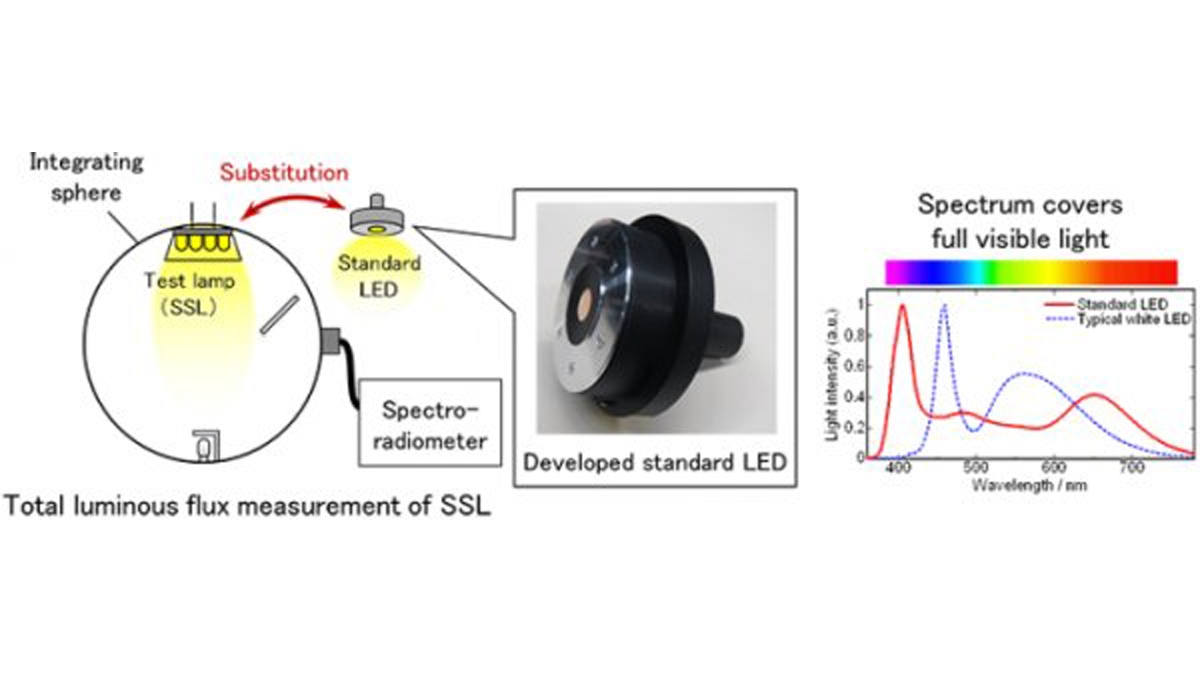
LED and OLED lighting, which is generally called solid-state lighting (SSL), is becoming more common as the next generation lighting. Evaluations of total luminous flux (a performance index for lighting) and color are important for SSL, and to evaluate those values, it is indispensable to measure the light intensity of each wavelength accurately based on spectral measurement. For accurate spectral measurement, the light source under test shall be compared to a standard light source as the reference standard. However, there has not been any standard light source covering the full visible light that suitable for high accuracy spectral measurement of SSL.
AIST and Nichia developed a standard LED having sufficient light intensity over the full visible light by introducing multiple LED dies with different central wavelengths in combination with multiple fluorescent substances. By using this standard LED, LED manufacturers and developers will be able to evaluate SSL characteristics more accurately, which is expected to help accelerate product development and enhance performance.
Details of the technology will be presented at the FY2015 National Metrology Institute of Japan research achievement meeting held on February 10, 2016, at AIST Tsukuba (Tsukuba, Ibaraki).
Lighting accounts for about one-sixth of residential energy consumption. LED and other forms of SSL consume less energy and are increasingly replacing traditional lighting such as incandescent and fluorescent lamps in order to conserve energy. For that reason, lighting manufacturers around the world are competing fiercely to research and develop SSL. Therefore it is important to inform users of correct performance of each product.
Energy efficiency and color are indices of the lighting product performance and are evaluated by a spectrum derived from spectral measurement. SSL, however, has different characteristics from those of traditional lighting. For example, radiation of SSL is emitted to the forward direction only and spectral distributions of SSL are rich in variety. Because of these differences, there have been no standard light sources suitable for spectral measurement of SSL, making it challenging to measure precisely.
Read more: Researchers develop LED covering full visible light spectrum
